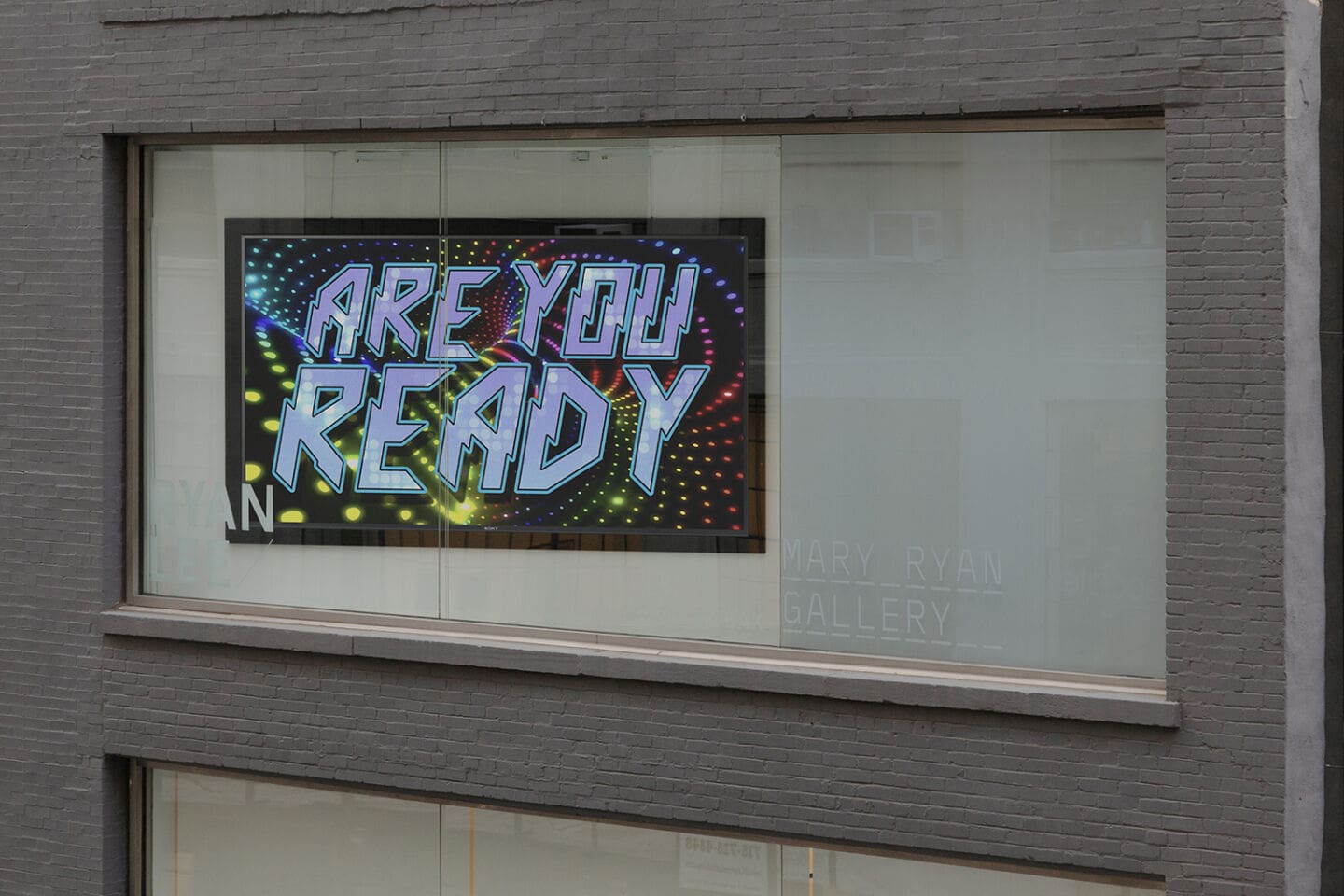With his work Mini Jumbo (2023), Tabor Robak achieves a glib, cheerful take down of the late-stage capitalist hustle culture that has defined a generation. Borrowing from video game imagery, digital aesthetics, and slick slogans ranging from “Work Hard, Have Fun, Burn Alive” to “I Will Never Call in Sick,” Robak confronts his viewer with what initially seems like the kind of bright and mindless cell-phone-adjacent content consumed during a work commute. These textual elements, sampled from advertising, social media, and real world signage converge to emphasize the disillusionment pervasive in work environments, particularly in New York and the art world. All together, this work tackles the unrealistic expectations external forces place on our work-life balance.
Tabor Robak: Mini Jumbo
Tabor Robak
Mini Jumbo, 2023
4k looping video
RT: 3min, 9sec
Edition of 3


The stark messaging of the artwork is delivered in highly digestible packaging: so pervasive are the aesthetics mined for this video that they fade into the digital backdrop of our online existence. Utilizing digital signifiers that we’ve become familiar with using smartphone games, first-person shooters, Instagram, Facebook, Mini Jumbo acts as a trojan horse into our digital experience to point out disturbing realities. The artwork examines the psyche of burnout, probing the messaging of advertising and its contradiction with an inherently unequal market. It places focus on the internalized capitalist narrative, specifically the negative internal dialogues and feelings of inadequacy that such messaging can instigate.
The happy slogans—at times cheerful, at other times insidiously disturbing—evoke the unsettling juxtaposition of regimented existence encapsulated in the daily grind and the relentless corporate hype with calls for self-love found on social media. This juxtaposition is one that we live with every day: confronted by it in Mini Jumbo, the cognitive dissonance becomes troubling.

Mini Jumbo, 2019
HD monitors, LED signage, solid state media players, HDMI signal duplicators, LED neon, cold cathode neon, various hardware
26 x 20 x 26 inches (66 x 50.8 x 66 cm), 33 inches (diagonal)
Edition of 3

For his presentation in RLWindow, Robak re-imagined a previous sculptural work with 4 channels of video into a single channel work. Long interested in the aesthetic of advertising and commercial projects, Robak at times simulates the 4 channel experience of the sculpture by presenting all of the scenes simultaneously.

Mini Jumbo (installed), 2019
Tabor Robak is primarily known for his digital art practice, multi-channel video installations and generative artworks. Interested in the visual vocabulary of modern video games, advertising and animated film, his work frequently examines societal perceptions of the digital and the real, and the seeming tension between human nature and technology. Robak investigates themes such as late-stage capitalism, mass media, trauma, domestic life, work culture, weapons, violence, robotics, healthcare and privacy.
Robak commonly employs several computer programs including Unity, Adobe After Effects, and Cinema 4D to create multi-channel video installations, procedurally generated animations, and electronic sculpture. He often incorporates novel technology including transparent television monitors, mini Raspberry Pi computers, and custom PCs for his procedurally generative works. Robak currently lives and works in Paris, France.

Brain Freeze, 2019
UV Printed LED lightbox, powder coated aluminum frame
54 (diameter) x 5 inches (137.2 x 12.7 cm)
Edition of 3
The lightbox Brain Freeze (2022) illustrates feelings of anxiety and depression as manifested by online behaviors. In the work, a shiny pink brain is locked in a sci-fi pod structure that suggests a state of stasis, one spent frozen in inaction, falling into internet rabbit holes or scrolling endlessly on one’s phone. The crosshairs at the bottom of the work borrows from first-person video games and places the viewer behind the steering wheel of this work—a frequent motif throughout his practice. The dashboard encapsulating the brain pod imply a desire for better emotional control, the crosshair might also suggest a desire to zap the little intersection of the brain holding the subject in a state of limbo.